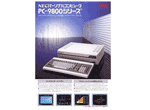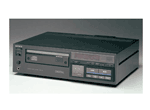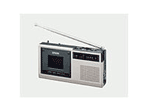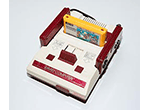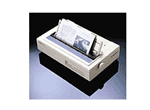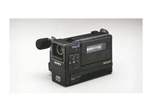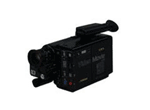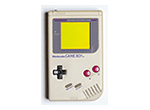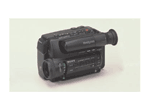Application Products
1980s
1982: The PC-9801 personal computer (NEC)
The PC-9801 was NEC’s leading model and in its heyday was termed the “national computer” due to its dominance of the Japanese PC market. The CPU of the first model of the PC-9801 was the 16-bit PD8086 (compatible with the 8086 from Intel) from NEC, which ran at 5 MHz.
The interrupt controller was an 8086-family chip from Intel. The architecture of the PC-9801 was thus similar to that of the IBM PC, which had been released in 1981.
1982: World’s first Compact Disc (CD) player (Sony)
The world’s first CD player, the CDP-101, was a combination of state-of-the-art technologies. Great efforts were made to apply these technologies to integrate D/A converters (previously made with many transistors and diodes) into single ICs and approximately 500 ICs for signal processing into only three LSI circuits.
1982: World’s first liquid crystal display (LCD) TV (Epson)
Epson used a 1.2-inch reflective LCD in the world’s first TV-equipped digital watch, which it released in 1982. The company followed this in 1984 with the release of a pocket color TV (product name: Televian) using a 2.1-inch transmissive TFT LCD.
July 15th, 1983: Family Computer home video-game consoles (Nintendo)
Nintendo released the Family Computer, a home video-game console of the multi-software type, at 14,800 yen.
The international version was known as the Nintendo Entertainment System. To keep costs reasonable, an 8-bit CPU was selected for the Family Computer. This was the same CPU (6502) as was used in Apple II computers. Ricoh developed the Picture Processing Unit (PPU) as a special IC for image processing.
1984: Micro Piezo printer IP-130K (Seiko Epson)
The IP-130K inkjet printer (known as the SQ-2000 outside Japan) was placed on the market by Epson in June 1984. Employing Micro Piezo technology, in which piezoelectric elements push ink from the nozzles, it was Epson’s first inkjet (non-impact) printer. The print head was made of glass with piezoelectric elements to a thickness of 120 m, and had 24 nozzles.
1985: First model Handycam, the CCD-M8 (Sony)
The CCD-M8 was an 8-mm video recorder and the first model of the Handycam series. Its compactness was due to the use of a fixed-focus lens and an optical viewfinder, and to the omission of a playback feature. Equipped with a 250,000-pixel analog CCD and weighing 1.1 kg, the CCD-M8 made video recording almost as easy as handling a compact still camera, as its advertising slogan, “Action with one hand”, indicated.
1986: World's smallest and lightest VHS-C video camera, the GR-C7 (Victor Company of Japan)
The GR-C7 was a 1.3-kg camcorder capable of both recording and playback. This model was a trigger for the diffusion of video movies that is still proceeding today. It also introduced advances in technologies such as CCD image sensors and the miniaturization of VCR mechanisms.
1989: A handheld video-game console, the Game Boy (Nintendo)
The Game Boy was sold worldwide and gained popularity among adults as well as children. The list price was 12,800 yen. The Game Boy was capable of 35 hours of operation from four alkaline AA batteries.
The CPU was a Z80 and the ROM cartridge was the medium for software programs. A 160 ´ 144-dot four-shade grayscale monochrome LCD (STN from Sharp) provided the display. The dimensions of the original Game Boy were 148 (length) ´ 90 (width) ´ 32 (height) mm, and it weighed approximately 220 g.
“Super Mario Land”, “Tennis”, and “Alleyway” were released as software programs at the same time as the Game Boy (prices were kept down to the range from 2,600 yen).
1989: Passport-sized 8-mm camcorder (Sony)
The CCD-TR55 was a Handycam camcorder for 8-mm video (Video 8) tapes and weighed only 790 g. The catch-phrase “passport-sized” took the world by storm. Developed with a number of new technologies, the CCD-TR55 created the era of easy recording while traveling. Its serial number also contained that of Sony’s first transistor radio, the TR-55.


